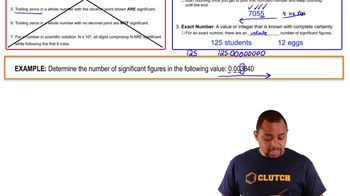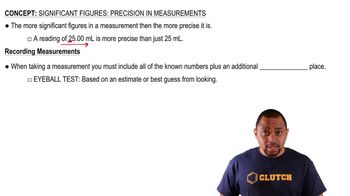Here are the essential concepts you must grasp in order to answer the question correctly.
Unit Conversion
Unit conversion is the process of converting a quantity expressed in one unit to another unit. In this case, converting milligrams (mg) to grams (g) is essential, as the balance measures mass in grams. Since 1 gram equals 1000 milligrams, 250 mg can be converted to grams by dividing by 1000, resulting in 0.250 grams.
Recommended video:
Significant Figures
Significant figures are the digits in a number that contribute to its precision. When measuring mass, the number of significant figures indicates the reliability of the measurement. The balance reads to four decimal places, meaning the measurement should also reflect this precision, ensuring that the final answer maintains the appropriate number of significant figures.
Recommended video:
Significant Figures Example
Precision of Measurement
Precision of measurement refers to the degree to which repeated measurements under unchanged conditions show the same results. In this context, the balance's ability to read to four decimal places indicates a high level of precision, which is important for accurately determining the mass of calcium carbonate needed for the experiment.
Recommended video:
Significant Figures Precision
 Verified step by step guidance
Verified step by step guidance


